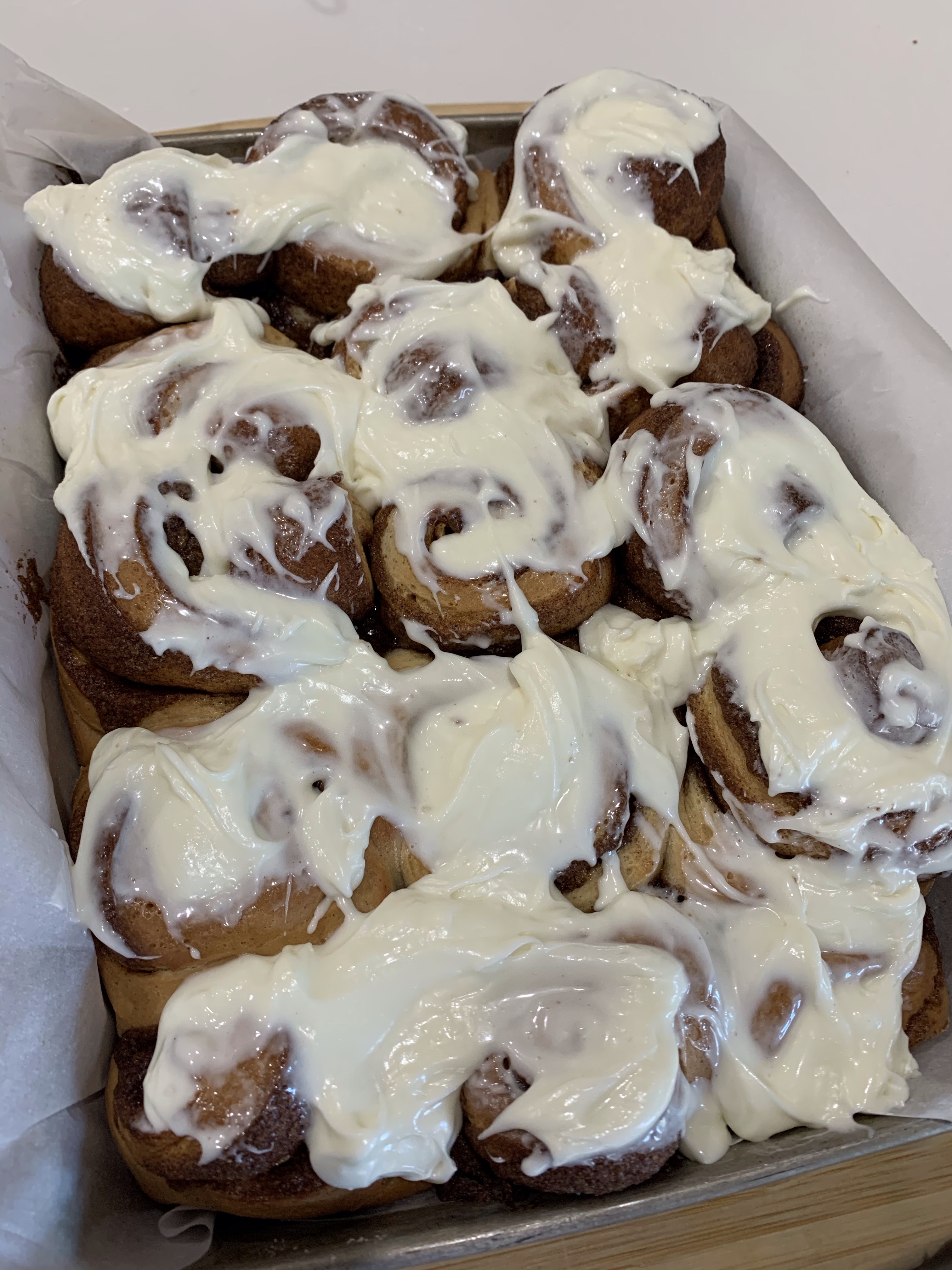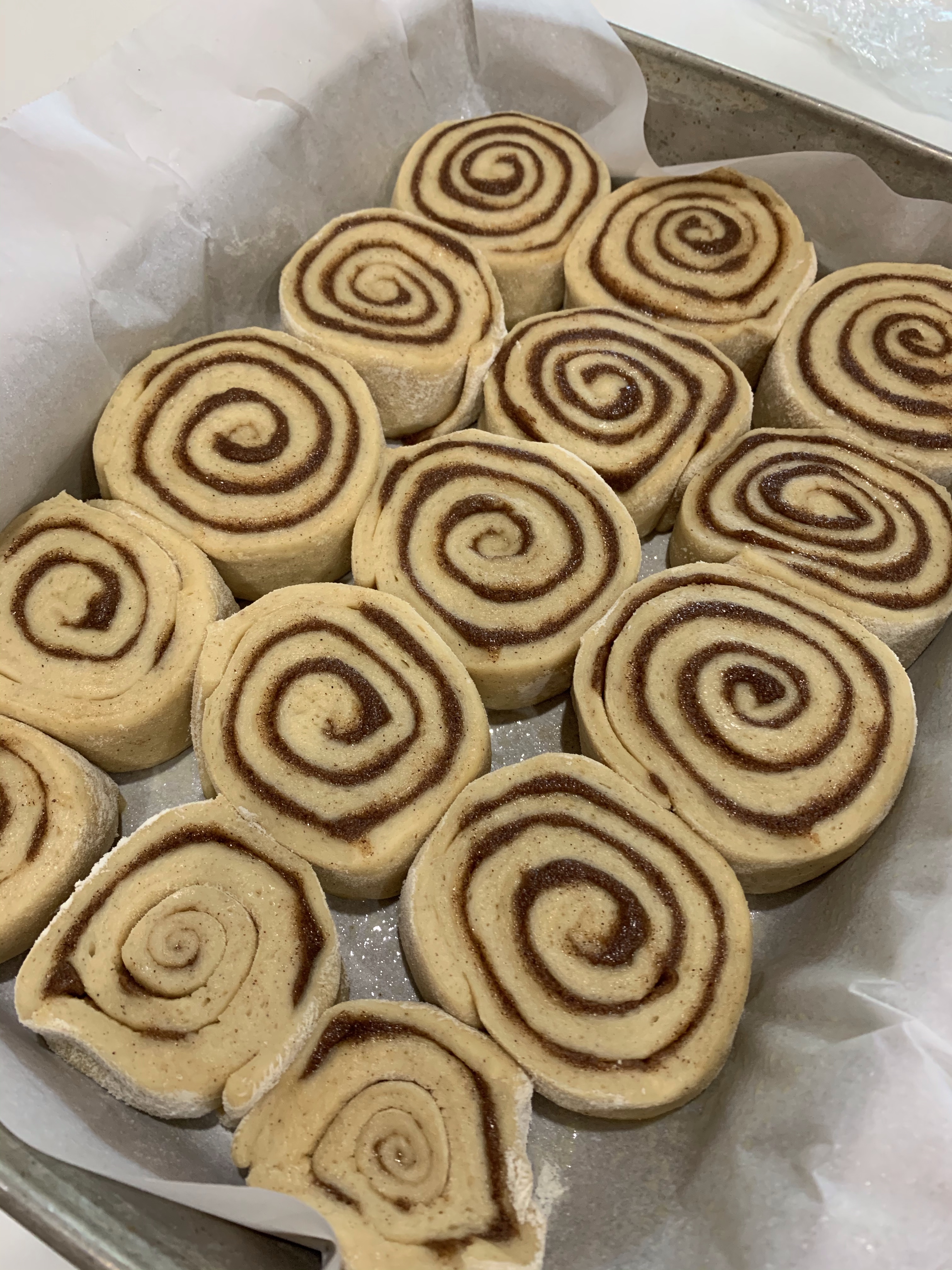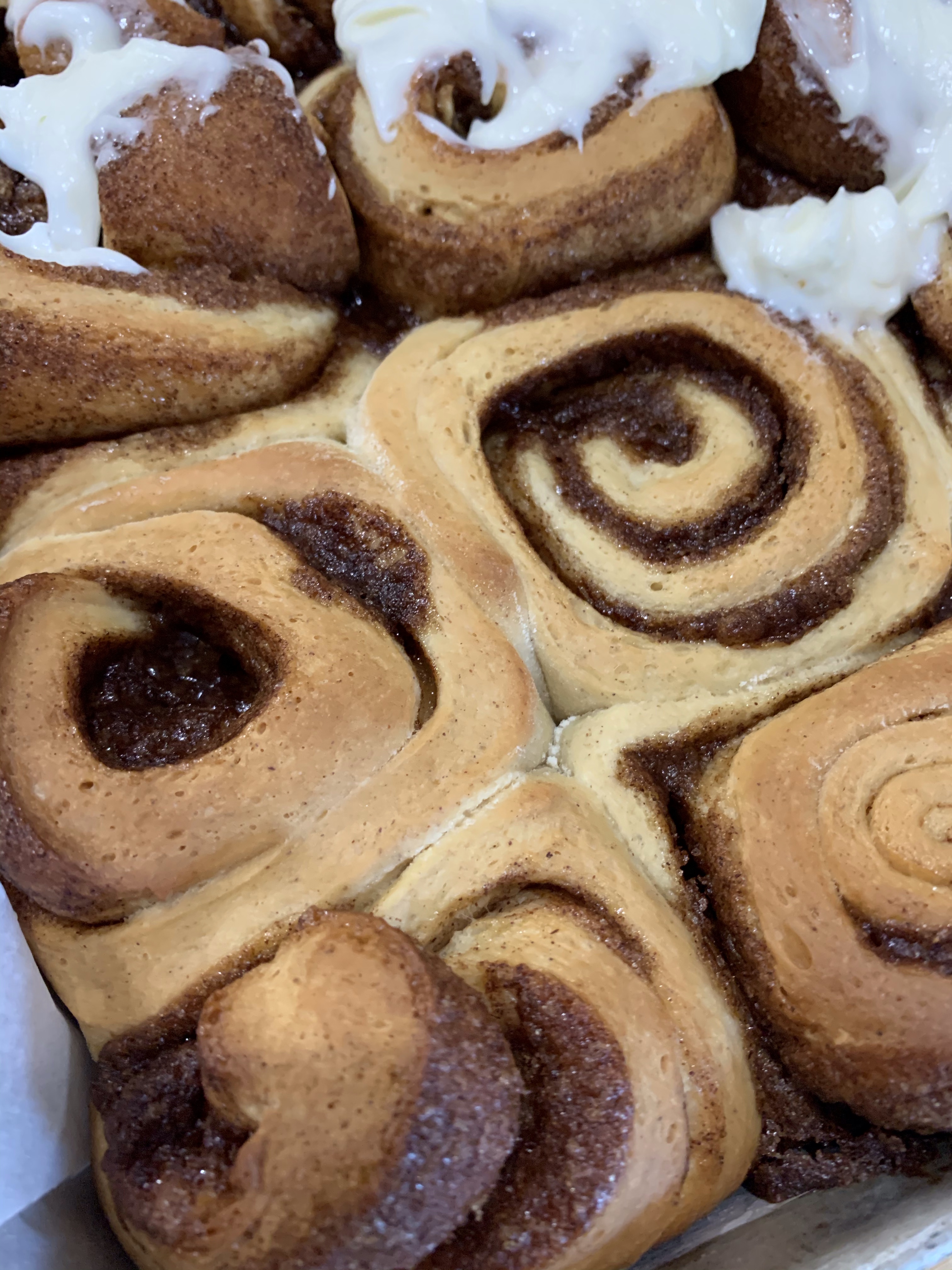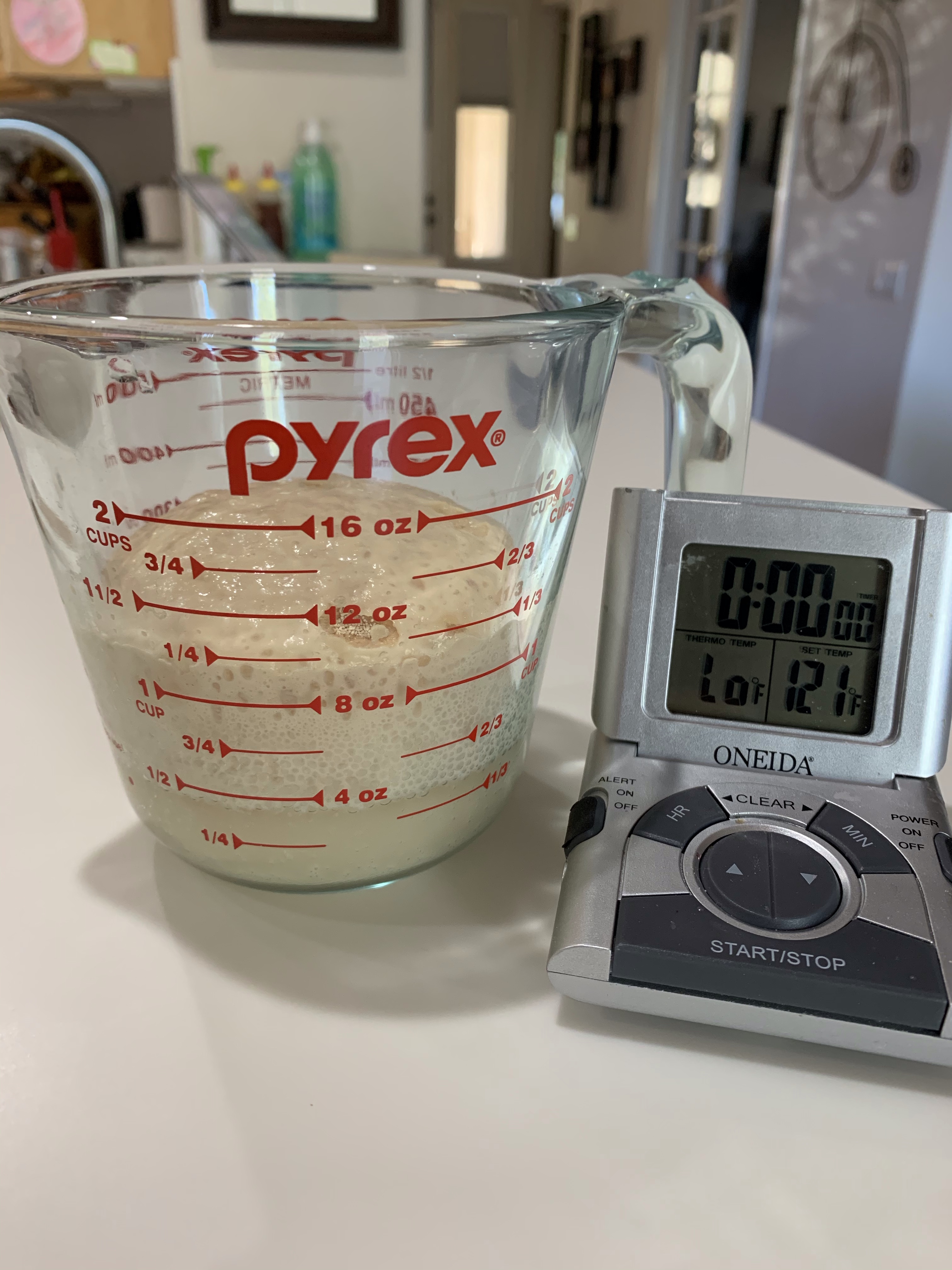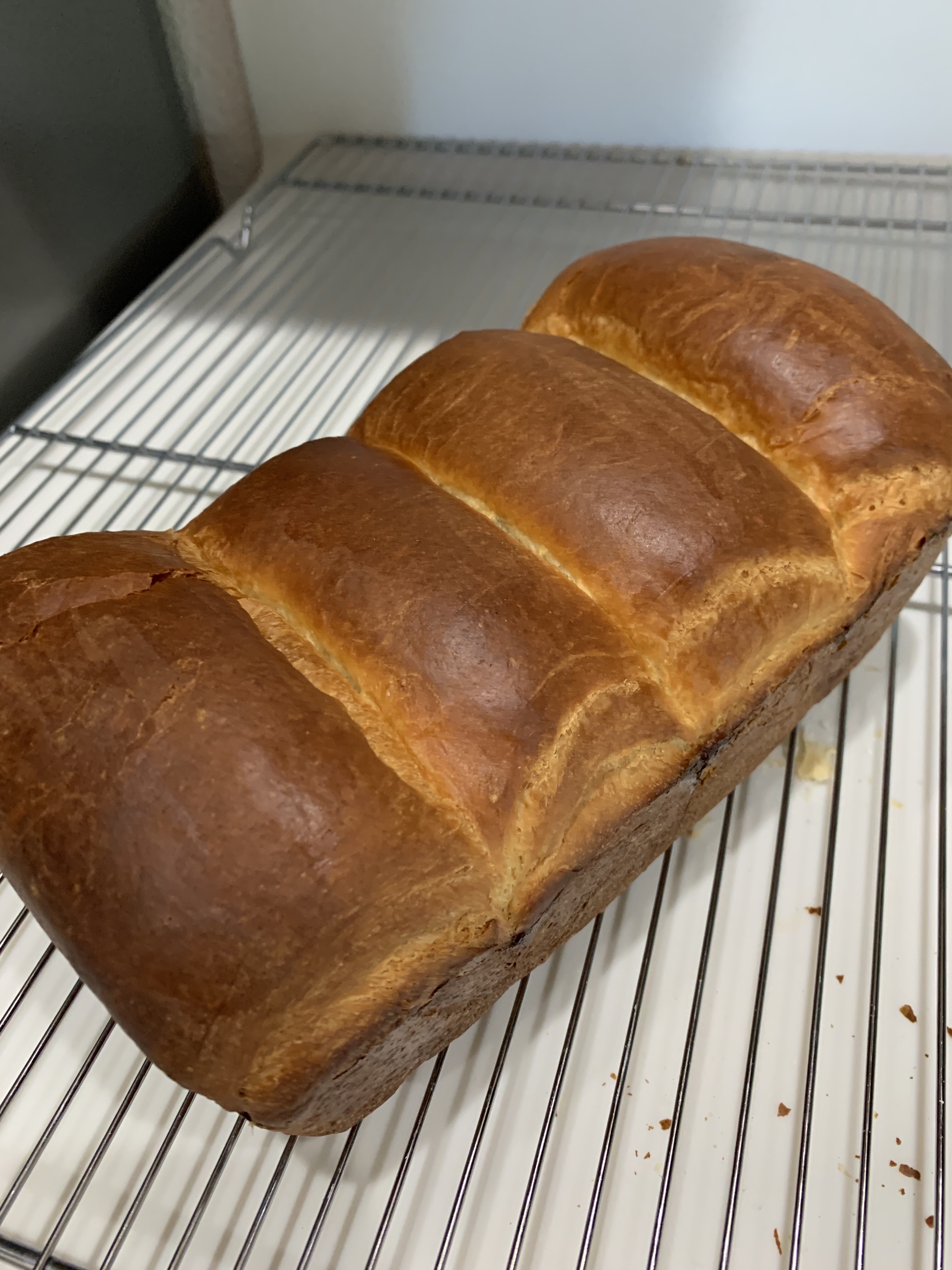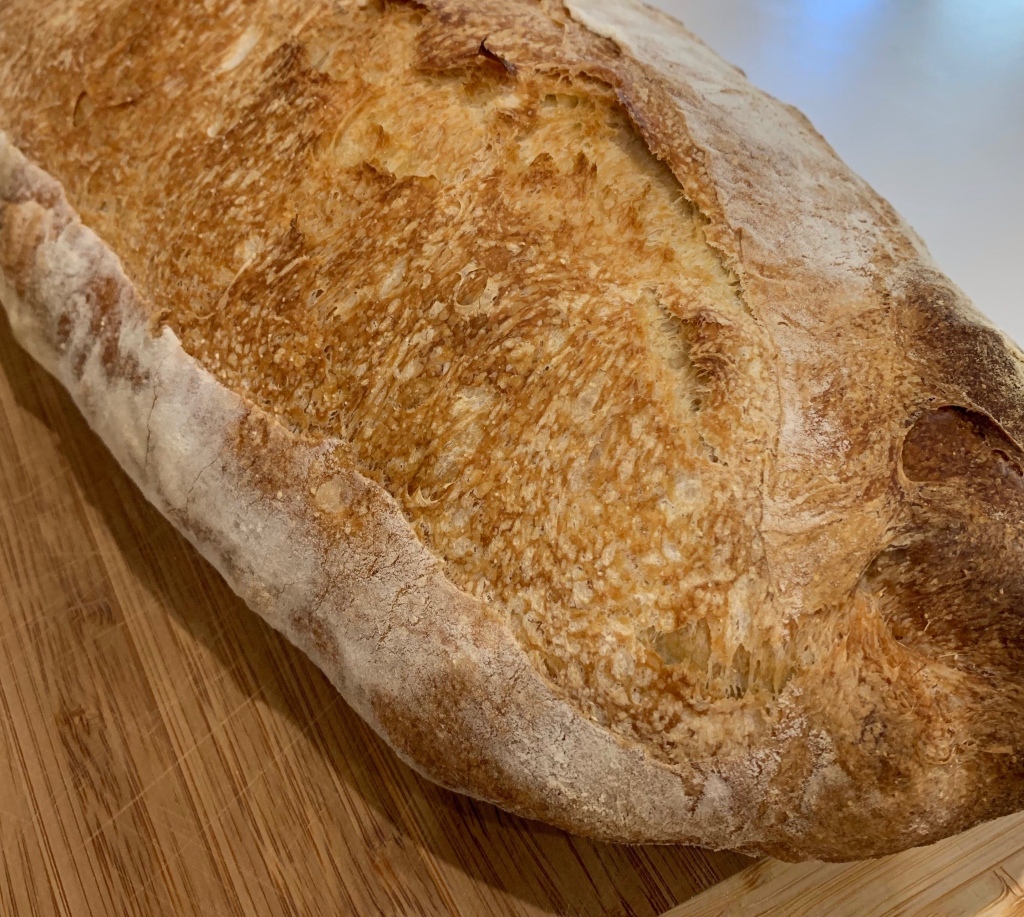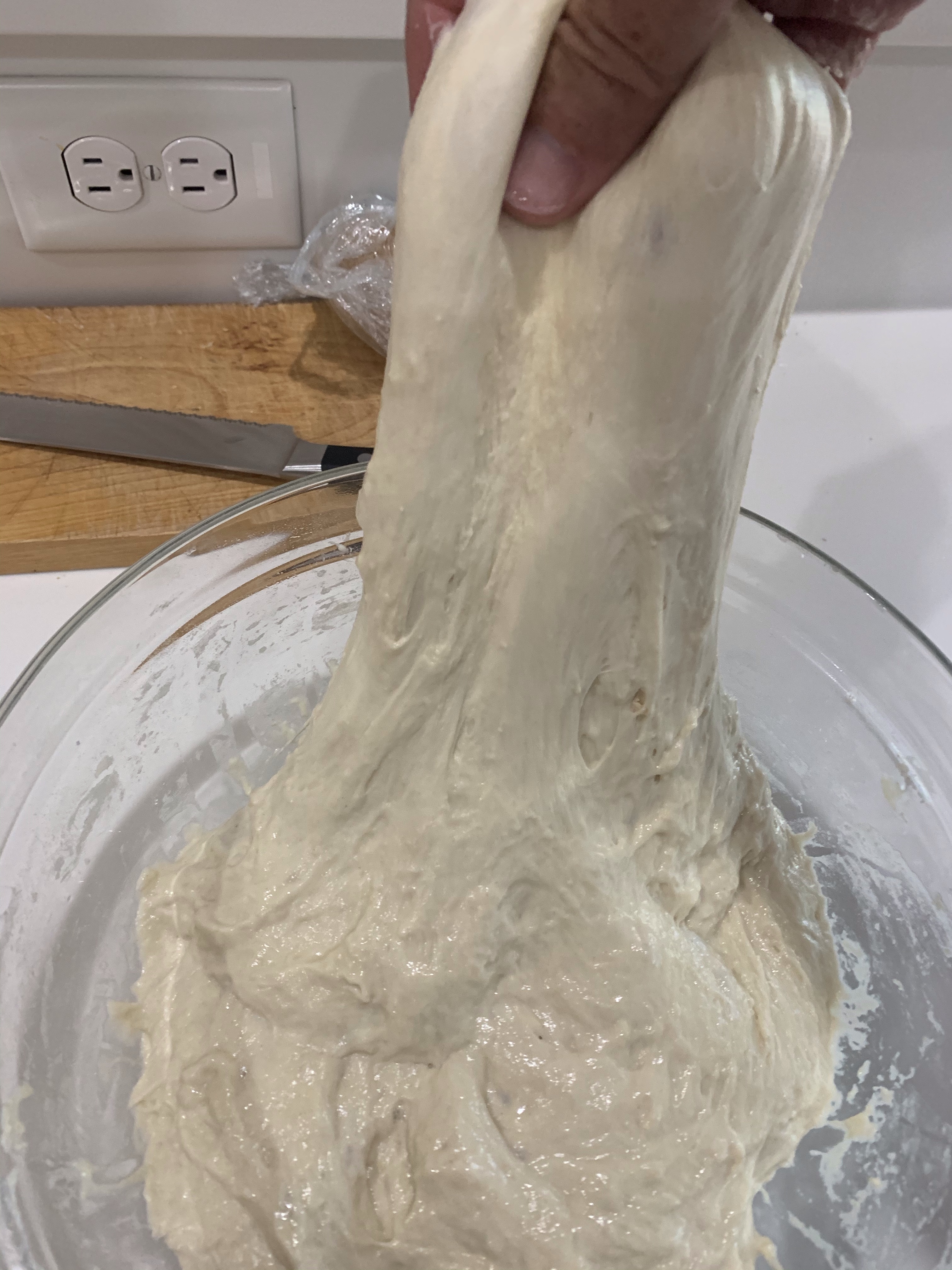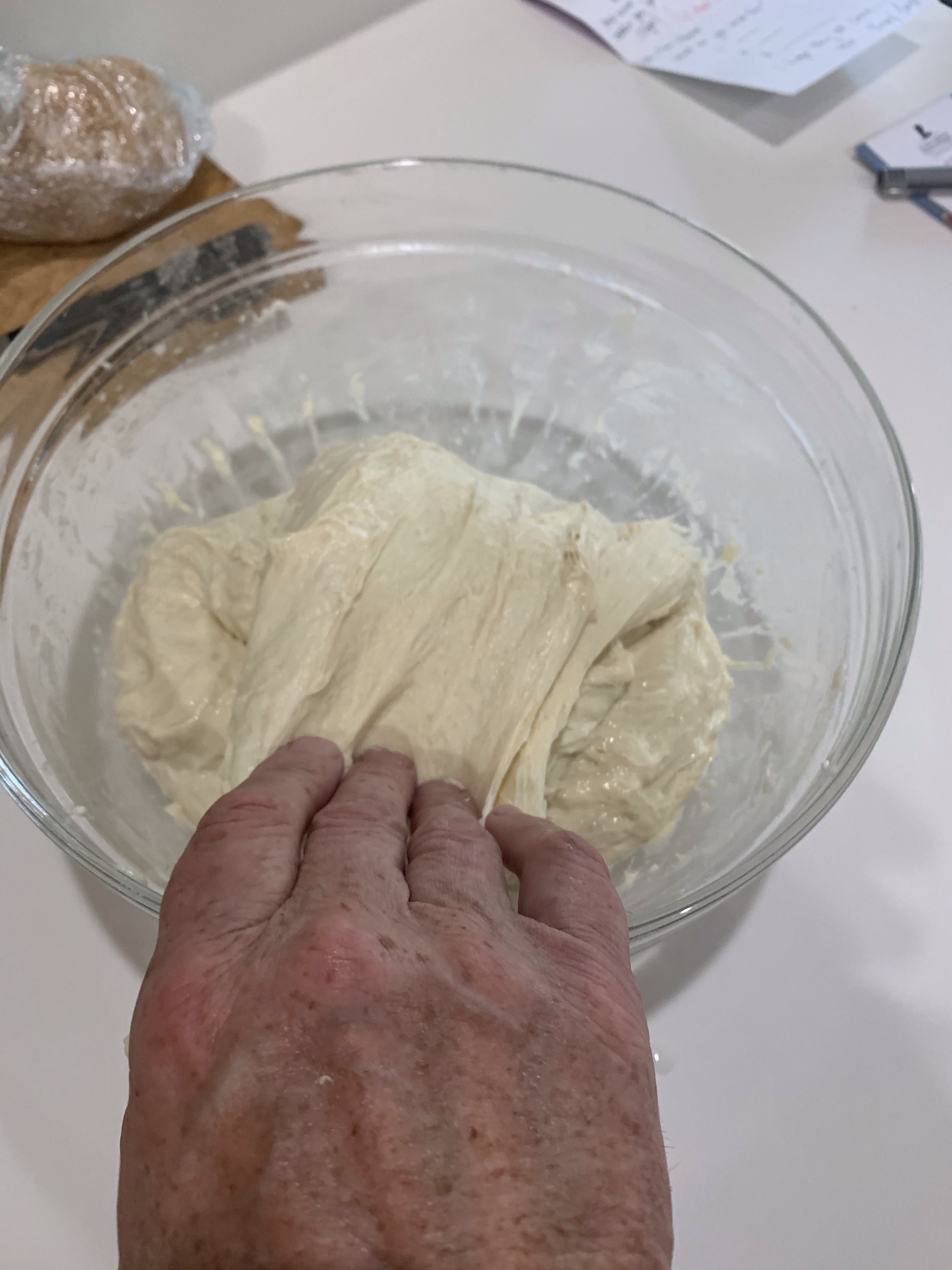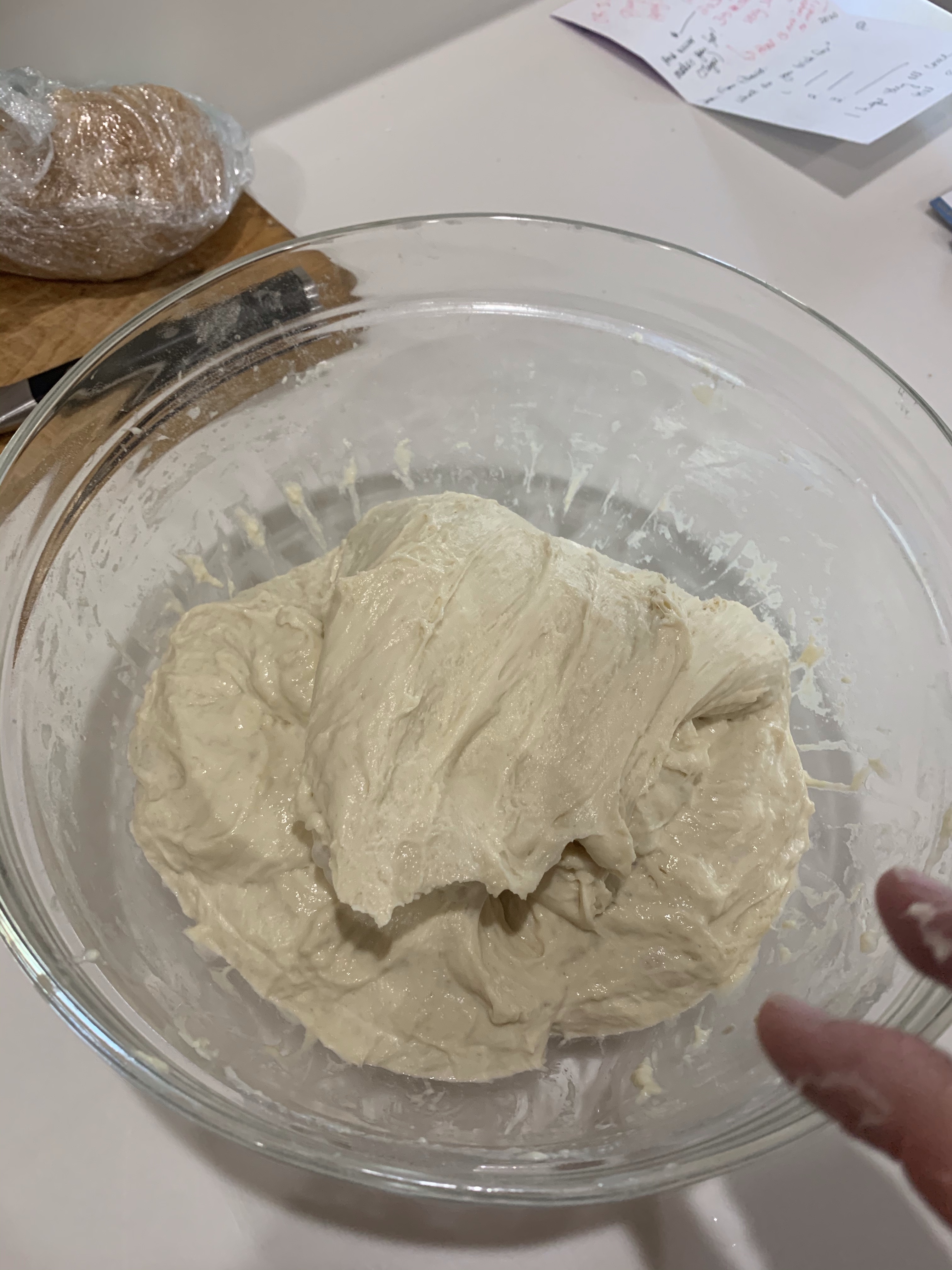I saw a recipe on Tasty.com for a Dutch Oven Jalapeño Cheese Bread and thought—that’s different and I wanted to try different. You see, I like things that change. I don’t like things that are always the same. Just ask the QA Department. She’ll tell you the truth.
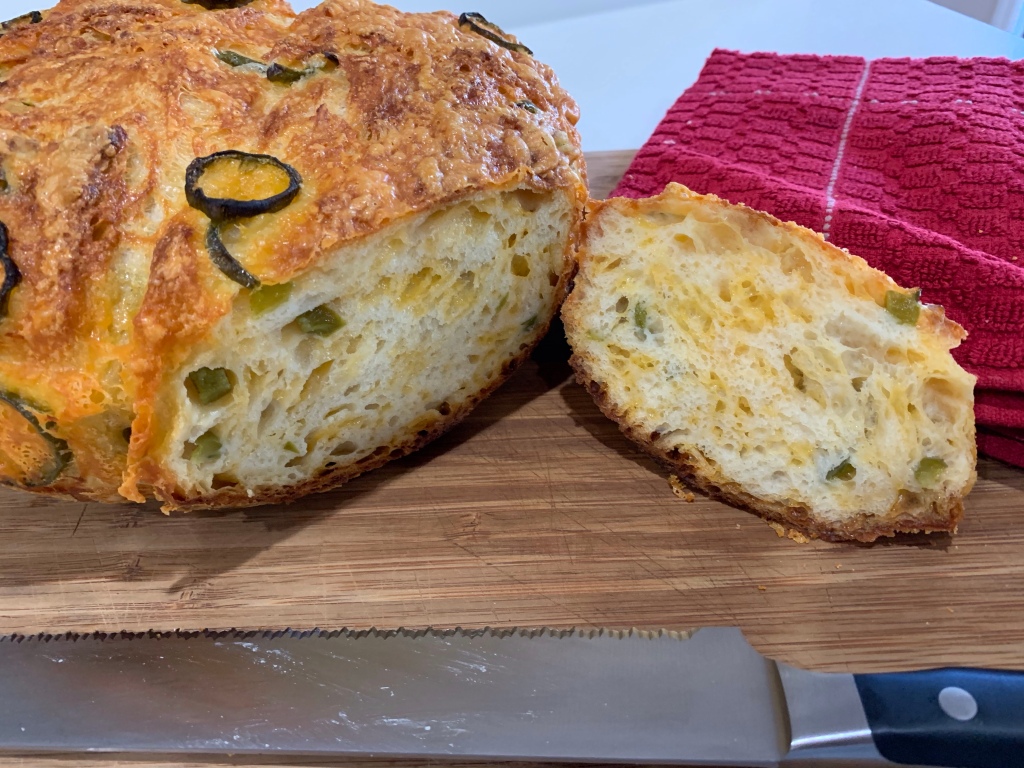
I made the bread diligently following the recipe. No changes. I used the stretch and fold method rather than kneading. This method is good for any high hydration bread. This particular techniques uses a silicone spoon to stretch the dough then fold it over. With other stretch and fold techniques the dough it placed on a lightly floured surface and either a bench scraper or your wet hands stretch, then fold.
Once the dough has risen the second time use the bench stretch and fold technique to form, more or less, a ball. The following video is the first time I have tried recording any bread making technique.
Dutch-Oven Jalapeño Cheddar Bread
https://tasty.co/recipe/dutch-oven-jalapeno-cheddar-bread
INGREDIENTS
• 3 ½ cups bread flour, plus more for dusting
• 2 ½ cups shredded sharp cheddar cheese, divided
• 2 (70g) jalapeños, seeded and coarsely chopped
• 1 jalapeño, sliced into rings, divided
• 1 tablespoon kosher salt
• 2 cups warm water
• 2 ¼ teaspoons instant yeast
• 1 tablespoon olive oil
METHOD
- In a large bowl, combine the bread flour, 2 cups (200 g) of cheddar cheese, the chopped jalapeños, and salt. Stir well.
- In a separate large bowl, combine the warm water and yeast. Pour the flour mixture on top of the water and use a silicone spatula to stir until the dough comes together.
- With the spatula, fold the dough around the edges of the bowl toward the center, rotating the bowl each time and folding a total of 8 times. Cover with a kitchen towel and let rest in a warm place for 60 minutes, or until almost doubled in size.
- Using the spatula, fold the dough toward the center again 8 more times. Cover with the towel and let rest for 30 minutes.
- Add the Dutch oven and lid to the oven, and preheat to 450˚F (230˚C) for 30 minutes.
- Lightly flour a clean work surface and your hands. Carefully peel the dough out of the bowl and onto the floured surface. Flip over and carefully brush away excess flour. Fold the edges of the dough towards the center 8 times, then flip over the dough and transfer to a piece of parchment paper.
- Brush the top of the dough with the olive oil, so the cheese will stick. Sprinkle the remaining ½ cup (50 g) of cheese on top. Use a sharp knife to score the bread with an “X”, which will allow steam to escape. Arrange the jalapeño rings on top of the cheese.
- Carefully remove the Dutch oven from the oven and use the parchment to lift the bread into the pot. Cover with the lid and bake for 30 minutes, then remove the lid and bake for 20 more minutes, until the bread is golden brown.
- Carefully slide the bread out of the pot and onto a wire rack. Remove the parchment paper and let the bread cool for at least 1 hour before slicing.
- Slice the bread and serve as desired.



